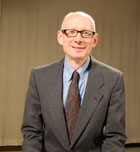Principal Investigator: Mark Wilhelm, Indiana University Purdue University, Indianapolis
This project will investigate the origins of generosity in children by focusing on three important questions:
- what causes a parent to socialize his or her children to be generous; what is his or her motive to transmit generosity?
- what is the causal effect of role-modeling and verbal encouragement, done specifically by parents, on their children’s generosity?
- what are the causal effects of local community conditions–neighborhood stress, racial/ethnic homogeneity, and poverty–on children’s generosity?
Wilhelm’s work on these three questions is tied together by the data and methods he will use to answer them. The questions will be answered using data from the 2001-2007 Panel Study of Income Dynamics (PSID) and its 2002 and 2007 Child Development Supplements (CDS) in econometric analyses of changes over time (individual fixed-effects) and changes between siblings (sibling fixed-effects).
By using panel data to follow the same individuals and analyze how their manifestation of generosity changes over time Wilhelm’s team will mitigate omitted variable bias, a pervasive problem that confounds causal interpretation using cross-sectional data. In short, they will use change over time to identify causality.
This project has three specific objectives. The first is to estimate a fixed-effects regression of changes in (adult) children’s giving on changes in their income. Comparing this estimate to the estimate froma standard cross-section regression of giving on income reveals the correlation between income and the adult child’s disposition to be generous. We argue that this correlation provides evidence about which motive, in the past, caused the parent to socialize her child to be generous.
The second objective is to estimate a fixed-effects regression of change in whether a child gives money to a church, synagogue, or another charity (change between ages 8-13 to ages 13-18) on change in whether the parent provides a role-model of giving and whether the parent verbally encourages giving.
And the third objective is to expand the regression just described to include changes in the characteristics of the child’s neighborhood.
The intellectual merit of Wilhelm’s work comes from several distinctive contributions. It poses a new question in the science of generosity about what causes parents to socialize generosity, develops new theory about parents’ purposeful socialization of generosity, derives predictions from that theory, and carefully integrates those predictions with the empirical analysis.
It also takes a central question from developmental psychology about the efficacy of role-modeling and verbal encouragement to increase children’s generosity, and extends the analysis for the first time to children’s natural settings with a nationally-representative sample by using new data describing the giving of children and their parents.
Finally, it asks new questions about the affect of neighborhoods on the development of children’s generosity, and, to our knowledge, is the first attempt to estimate the causal impact of neighborhoods on a manifestation of generosity.
The work will have broad impact in several ways. The first object will be significant because it introduces a fresh question into the science of generosity and will provide the first evidence about which motives cause parents to transmit generosity. The second objective will be significant because it provides the first estimates, using nationally-representative data from children’s natural settings, of the causal effect of role-modeling and verbal encouragement done specifically by parents.
And the third objective will be significant because it provides the first estimates of the causal effects of neighborhood characteristics on children’s giving. All together, the work will have significant practical implications. New knowledge about motives that cause parents to transmit generosity, the efficacy of parental role-modeling and verbal encouragement of giving, and the effects of neighborhood characteristics can be used by community leaders, church leaders, educators, and policy-makers to assist parents in the transmission of generosity to children.




